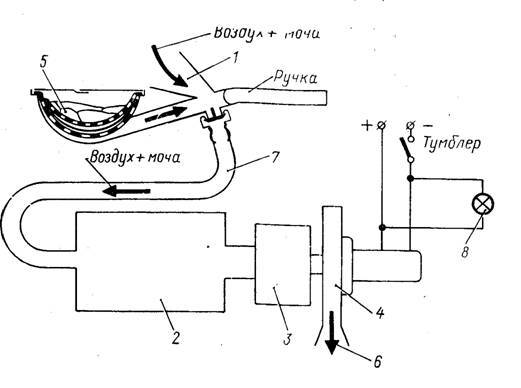Will Starship reach Mars?
For almost 60 years of space exploration, there were many and varying degrees of elaboration of flight projects to Mars and other planets. But the SpaceX project “Starship” (Starship) stands out among them for the following reasons:
Why "Starship" will be able to do some rocket engines, as usual, under the cut.
A key feature of the Starship project is the use of Martian resources to produce fuel for the return flight. This move allows you to actually halve the cholesterol of a rocket compared with a round-trip flight at the same gas station at the same speed.

Mars Direct. The distant ship is returnable and waited for the arrival of the ship with the crew (near), generating fuel.
Such an approach is not something new in itself: the production of methane from the Martian atmosphere and hydrogen brought in was still in the “Mars Direct” project of Robert Zubrin. The Mask project is distinguished by the size of the ship, reusability and high speed of interplanetary flight. The latter is a consequence of the fact that in order to reach the second stage of a reusable rocket with the help of the SpaceX mastered the Falcon-9 method, it is necessary to provide a speed increment of about 7 km / s. And since it is planned to refuel the same second stage with reusable tankers at its base for the flight to Mars, it makes sense to refuel it completely and fly off along a fast trajectory. From underfilling of fuel, the fuel tank will not increase (and reloading is more difficult than refueling, and the compartments are not rubber), and the flights of tankers are planned to be extremely cheap.

The hydrogen content (most likely in the form of water ice) in the surface layer of Martian soil according to the Mars Odyssey satellite.
So, it remains to deploy on Mars the production of methane-oxygen fuel from local resources. Namely: the "groundwater" discovered by the satellites (most likely in the form of permafrost, although it may also be liquid) and carbon dioxide from the atmosphere.
The Sabatier reaction is supposed to be used for methane production:
CO2 + 4H2 = CH4 + 2H2O The
good news is that this reaction is exothermic, so that heat from the Sabatier reactor can be adapted, for example, to permafrost evaporation. Hydrogen for the Sabatier reaction and oxygen for the rocket will have to be extracted by electrolysis of Martian water and water produced in the Sabatier reaction.
According to the 2017 presentation, a full BFR gas station consists of 240 tons of methane and 860 tons of oxygen. Since the material of the hull has changed since that presentation, but not the engine and the laws of physics, we can assume that the proportion of 3.58 tons of oxidizing agent per ton of fuel has been preserved. But there is one caveat: the amount of hydrogen required to produce a kilogram of methane in the production of electrolysis gives four kilograms of oxygen. So instead of 1100 tons, we will need to produce 1200. By the way, 100 tons of oxygen when used in the LSS will be enough for about 100 thousand man-days.
Water electrolysis is an energy-consuming process on the one hand, and on the other hand, with a properly designed installation, it has an efficiency of about 100%. Rounding up we get 16 MJ per kilogram of water. Or 18 MJ per kilogram of oxygen produced. In terms of kilogram of the final product, the cost of electrolysis will be 14.4 MJ.
To distill water to prepare for electrolysis, it takes about 22-30 kJ per kilogram of water (the distiller on Mars can work near the triple point), and distillation is required only for dirty local water, not the waste of the Sabatier reaction, and condensation of the components into a liquid state (for oxygen excluding the efficiency of the refrigerator within 0.4 MJ / kg). The costs of temperature control of the fuel components in the tanks without knowing the design of the ship cannot be estimated exactly. So we’ll just assume that we need 20 MJ per kilogram of the final product. Or +5.6 MJ for costs not related to electrolysis.
So. We estimated an energy requirement of 20 MJ per kilogram of product. On the one hand, this is a lot. But on the other hand, it’s two years between the launch windows, so we have so much time to produce 1,200 tons of product. Two years is about 60 million seconds, so the average productivity of the fuel "plant" should be ... 20 grams per second. Because the "factory" and in quotation marks. The average power consumption will be 400 kW.
A nuclear reactor disappears - all real-life space nuclear power plants had an electric power two orders of magnitude less than required. SpaceX also won’t pull the development of a nuclear power plant with the required specific power. But the Mask has Tesla with the former Solar City, producing solar panels.

Soviet space nuclear power plants. The Topaz-100/40 project did not reach space. And everyone, to put it mildly, is not inspired by the duration of operation in maximum power mode. The
good news is that the fuel plant does not need buffer batteries. The production of rocket fuel is battery charging. So it’s enough to calculate only the area of solar panels required to provide an average power of 400 kW, taking into account the average daily cycle.
On average, during the Martian year, the solar constant is about 600 W / m2 normal. We assume that the SBs simply lie on the slope of the crater in an optimal position for a given latitude - this is also the main way to mount them on Earth. Excluding dust storms, 191 watts of light (600 / pi) per square meter falls on an average Martian day. To account for the storms, we introduce a coefficient of 0.7 (I do not know Martian meteorology, but they will probably choose a place where there is less dust). As a result, with an efficiency of 20%, we get 26 watts per square meter on average per day. Again, for convenience and reliability, we round off, but this time down - up to 20 W / m2. For the required 400 kW, 20,000 square meters or 2 hectares of solar panels will be needed. In modern household and public safety services, the specific gravity is about 10 kg / m2. Together with a box for attaching to the roof, on Earth, where the wind pressure is orders of magnitude stronger than the Martian. While the designers of this box optimized it for manufacturability, not weight. Flexible solar cells (again for domestic purposes) have a specific gravity of 3.5 kg / m2. On Mars, they can simply be rolled out on the ground - at a pressure of 6 mbar, the wind cannot carry them away. But it will be able to bring dust that will have to be blown away or swept away by robots or by the astronauts themselves (Spirit had to wait for the “dusty devil”).

Flexible SB for the Earth
But suppose, along with wires, our solar power plant still weighs 10 kg per meter. For the required 2 hectares of batteries, we need 200 tons. Despite the fact that according to the plan on Mars, at the beginning 2 unmanned ships will start, and in the next window - 2 cargo and 2 manned with a crew of no more than 10 people. A total of 6 ships and from 600 to 900 tons on the surface of Mars. The first figure is obtained from the assumption that they will not be able to reach the 150 tons of cargo tanks or will not be able to (and 100 tons of missiles at the IEO completely existed). At least 3 times more than required.
But besides the fuel factory, energy will also be required ...
First, it’s the main thing (s): Russia will not be able to leave SpaceX without a space toilet. The fact is that the reliability of the Soviet space toilet compared to the Shuttle WCS was due to not Soviet top-secret technologies, but to the fact that the Americans complicated their system by trying to automate the process of evacuating feces away from the astronaut. Which leads to blockages and other "joys". While in the Soviet-Russian space-sausage, the air flow only ensured that the feces were pressed against the surface of the perforated bag, which after use must be stored by hand. On Skylab, the Americans had an even simpler system in which the feces bag was airtight and required pushing the waste products with your fingers (using special bags) deeper into the bag, but it had a urine pumping system. SpaceX can both lift the skylab toilet drawings (which,

Scheme of the Soviet space toilet. Urine passes through a pipe with a stream of air, feces remains in the compartment with the number 5, pressed by a stream of air.

Shuttle American toilet. The greater complexity (and lower reliability) of the system is associated with an attempt to evacuate feces in the same stream that carried urine.
We will move from waste disposal to other human needs. As can be seen from the table (taken from here ), the need for a crew of 6 people for a flight lasting 500 days (which is slightly less than the expected duration of the Martian mission on the Starship) will require 58 tons of oxygen, food and water. Of which water is 50 tons.

In principle, taking into account the fast trajectory of the “Starship” flight (time depends on the type of confrontation, but on average 115 days), it is possible to manage water supplies on the ship. But since the Martian plant still requires the development of a technology for preparing local water for electrolysis (i.e., its purification and distillation), it is possible to regenerate.
Water recovery systems developed in the USSR for the Mir station weighed 2.4 tons per crew of 6. In the case of using water recovered from urine for the production of oxygen by electrolysis (the mass of urine per day just roughly coincides with the human need for oxygen at the same time), the main consumer will again be the electrolyzer with its 18 MJ per kilogram of product. Oxygen per person per day requires about a kilogram, which gives the power consumed by the electrolyzer 208 W per person. Distillation, I repeat, in the presence of vacuum requires about 22 kJ per kilogram, which is negligible against the background of electrolysis costs, even taking into account the greater volume of household water. Having accepted the energy demand of 300 watts per person, including the cost of lighting and charging tablets (with space maps, yeah), we get 30 kW for a 100-seater ship. This is only twice as much as the power supply of modern communication satellites (up to 15 kW per satellite). Upon arrival to Mars, the costs of water electrolysis to provide oxygen are turned off - the fuel plant already produces 100 extra tons of oxygen per refueling.
Her danger is greatly exaggerated. In space, there are two sources of radiation: the Sun, which gives a lot of relatively low-energy particles, but radiates from only one direction, and the GKI, "shining" with small quantities of high-energy particles from everywhere. Accordingly, you can protect yourself from the Sun simply by layout - by turning non-residential compartments to it. Actually, this is planned, as evidenced by at least the location of the SB on the Starship (see picture). GKI is easier to endure, since the flight passes along a fast trajectory. The dose of GKI received during the flight is on the one hand higher than the norms of earthly workers in the nuclear industry, but on the other hand is several times lower than what is required for the development of even chronic radiation sickness.

Render then ITS. The case is now different, but the placement of the SB remains the same.
- Completely private initiative and funding, at least for now.
- Despite the previous paragraph, a high degree of readiness. One of the key technologies (reusable liquid stage) has already been mastered , a prototype is under construction, the engine has been tested.
- Ambitiousness. Not just fly to Mars, but start building a permanent colony. And the ship in the future can carry a hundred people. And not only to Mars.
- Lack of nuclear, plasma
and hyperspaceengines. Only LREonly hardcore.
Why "Starship" will be able to do some rocket engines, as usual, under the cut.
Space refueling
A key feature of the Starship project is the use of Martian resources to produce fuel for the return flight. This move allows you to actually halve the cholesterol of a rocket compared with a round-trip flight at the same gas station at the same speed.

Mars Direct. The distant ship is returnable and waited for the arrival of the ship with the crew (near), generating fuel.
Such an approach is not something new in itself: the production of methane from the Martian atmosphere and hydrogen brought in was still in the “Mars Direct” project of Robert Zubrin. The Mask project is distinguished by the size of the ship, reusability and high speed of interplanetary flight. The latter is a consequence of the fact that in order to reach the second stage of a reusable rocket with the help of the SpaceX mastered the Falcon-9 method, it is necessary to provide a speed increment of about 7 km / s. And since it is planned to refuel the same second stage with reusable tankers at its base for the flight to Mars, it makes sense to refuel it completely and fly off along a fast trajectory. From underfilling of fuel, the fuel tank will not increase (and reloading is more difficult than refueling, and the compartments are not rubber), and the flights of tankers are planned to be extremely cheap.

The hydrogen content (most likely in the form of water ice) in the surface layer of Martian soil according to the Mars Odyssey satellite.
So, it remains to deploy on Mars the production of methane-oxygen fuel from local resources. Namely: the "groundwater" discovered by the satellites (most likely in the form of permafrost, although it may also be liquid) and carbon dioxide from the atmosphere.
Methane factory
The Sabatier reaction is supposed to be used for methane production:
CO2 + 4H2 = CH4 + 2H2O The
good news is that this reaction is exothermic, so that heat from the Sabatier reactor can be adapted, for example, to permafrost evaporation. Hydrogen for the Sabatier reaction and oxygen for the rocket will have to be extracted by electrolysis of Martian water and water produced in the Sabatier reaction.
According to the 2017 presentation, a full BFR gas station consists of 240 tons of methane and 860 tons of oxygen. Since the material of the hull has changed since that presentation, but not the engine and the laws of physics, we can assume that the proportion of 3.58 tons of oxidizing agent per ton of fuel has been preserved. But there is one caveat: the amount of hydrogen required to produce a kilogram of methane in the production of electrolysis gives four kilograms of oxygen. So instead of 1100 tons, we will need to produce 1200. By the way, 100 tons of oxygen when used in the LSS will be enough for about 100 thousand man-days.
Water electrolysis is an energy-consuming process on the one hand, and on the other hand, with a properly designed installation, it has an efficiency of about 100%. Rounding up we get 16 MJ per kilogram of water. Or 18 MJ per kilogram of oxygen produced. In terms of kilogram of the final product, the cost of electrolysis will be 14.4 MJ.
To distill water to prepare for electrolysis, it takes about 22-30 kJ per kilogram of water (the distiller on Mars can work near the triple point), and distillation is required only for dirty local water, not the waste of the Sabatier reaction, and condensation of the components into a liquid state (for oxygen excluding the efficiency of the refrigerator within 0.4 MJ / kg). The costs of temperature control of the fuel components in the tanks without knowing the design of the ship cannot be estimated exactly. So we’ll just assume that we need 20 MJ per kilogram of the final product. Or +5.6 MJ for costs not related to electrolysis.
So. We estimated an energy requirement of 20 MJ per kilogram of product. On the one hand, this is a lot. But on the other hand, it’s two years between the launch windows, so we have so much time to produce 1,200 tons of product. Two years is about 60 million seconds, so the average productivity of the fuel "plant" should be ... 20 grams per second. Because the "factory" and in quotation marks. The average power consumption will be 400 kW.
A nuclear reactor disappears - all real-life space nuclear power plants had an electric power two orders of magnitude less than required. SpaceX also won’t pull the development of a nuclear power plant with the required specific power. But the Mask has Tesla with the former Solar City, producing solar panels.

Soviet space nuclear power plants. The Topaz-100/40 project did not reach space. And everyone, to put it mildly, is not inspired by the duration of operation in maximum power mode. The
good news is that the fuel plant does not need buffer batteries. The production of rocket fuel is battery charging. So it’s enough to calculate only the area of solar panels required to provide an average power of 400 kW, taking into account the average daily cycle.
On average, during the Martian year, the solar constant is about 600 W / m2 normal. We assume that the SBs simply lie on the slope of the crater in an optimal position for a given latitude - this is also the main way to mount them on Earth. Excluding dust storms, 191 watts of light (600 / pi) per square meter falls on an average Martian day. To account for the storms, we introduce a coefficient of 0.7 (I do not know Martian meteorology, but they will probably choose a place where there is less dust). As a result, with an efficiency of 20%, we get 26 watts per square meter on average per day. Again, for convenience and reliability, we round off, but this time down - up to 20 W / m2. For the required 400 kW, 20,000 square meters or 2 hectares of solar panels will be needed. In modern household and public safety services, the specific gravity is about 10 kg / m2. Together with a box for attaching to the roof, on Earth, where the wind pressure is orders of magnitude stronger than the Martian. While the designers of this box optimized it for manufacturability, not weight. Flexible solar cells (again for domestic purposes) have a specific gravity of 3.5 kg / m2. On Mars, they can simply be rolled out on the ground - at a pressure of 6 mbar, the wind cannot carry them away. But it will be able to bring dust that will have to be blown away or swept away by robots or by the astronauts themselves (Spirit had to wait for the “dusty devil”).

Flexible SB for the Earth
But suppose, along with wires, our solar power plant still weighs 10 kg per meter. For the required 2 hectares of batteries, we need 200 tons. Despite the fact that according to the plan on Mars, at the beginning 2 unmanned ships will start, and in the next window - 2 cargo and 2 manned with a crew of no more than 10 people. A total of 6 ships and from 600 to 900 tons on the surface of Mars. The first figure is obtained from the assumption that they will not be able to reach the 150 tons of cargo tanks or will not be able to (and 100 tons of missiles at the IEO completely existed). At least 3 times more than required.
But besides the fuel factory, energy will also be required ...
SJO
First, it’s the main thing (s): Russia will not be able to leave SpaceX without a space toilet. The fact is that the reliability of the Soviet space toilet compared to the Shuttle WCS was due to not Soviet top-secret technologies, but to the fact that the Americans complicated their system by trying to automate the process of evacuating feces away from the astronaut. Which leads to blockages and other "joys". While in the Soviet-Russian space-sausage, the air flow only ensured that the feces were pressed against the surface of the perforated bag, which after use must be stored by hand. On Skylab, the Americans had an even simpler system in which the feces bag was airtight and required pushing the waste products with your fingers (using special bags) deeper into the bag, but it had a urine pumping system. SpaceX can both lift the skylab toilet drawings (which,

Scheme of the Soviet space toilet. Urine passes through a pipe with a stream of air, feces remains in the compartment with the number 5, pressed by a stream of air.

Shuttle American toilet. The greater complexity (and lower reliability) of the system is associated with an attempt to evacuate feces in the same stream that carried urine.
We will move from waste disposal to other human needs. As can be seen from the table (taken from here ), the need for a crew of 6 people for a flight lasting 500 days (which is slightly less than the expected duration of the Martian mission on the Starship) will require 58 tons of oxygen, food and water. Of which water is 50 tons.

In principle, taking into account the fast trajectory of the “Starship” flight (time depends on the type of confrontation, but on average 115 days), it is possible to manage water supplies on the ship. But since the Martian plant still requires the development of a technology for preparing local water for electrolysis (i.e., its purification and distillation), it is possible to regenerate.
Water recovery systems developed in the USSR for the Mir station weighed 2.4 tons per crew of 6. In the case of using water recovered from urine for the production of oxygen by electrolysis (the mass of urine per day just roughly coincides with the human need for oxygen at the same time), the main consumer will again be the electrolyzer with its 18 MJ per kilogram of product. Oxygen per person per day requires about a kilogram, which gives the power consumed by the electrolyzer 208 W per person. Distillation, I repeat, in the presence of vacuum requires about 22 kJ per kilogram, which is negligible against the background of electrolysis costs, even taking into account the greater volume of household water. Having accepted the energy demand of 300 watts per person, including the cost of lighting and charging tablets (with space maps, yeah), we get 30 kW for a 100-seater ship. This is only twice as much as the power supply of modern communication satellites (up to 15 kW per satellite). Upon arrival to Mars, the costs of water electrolysis to provide oxygen are turned off - the fuel plant already produces 100 extra tons of oxygen per refueling.
And radiation
Her danger is greatly exaggerated. In space, there are two sources of radiation: the Sun, which gives a lot of relatively low-energy particles, but radiates from only one direction, and the GKI, "shining" with small quantities of high-energy particles from everywhere. Accordingly, you can protect yourself from the Sun simply by layout - by turning non-residential compartments to it. Actually, this is planned, as evidenced by at least the location of the SB on the Starship (see picture). GKI is easier to endure, since the flight passes along a fast trajectory. The dose of GKI received during the flight is on the one hand higher than the norms of earthly workers in the nuclear industry, but on the other hand is several times lower than what is required for the development of even chronic radiation sickness.

Render then ITS. The case is now different, but the placement of the SB remains the same.
